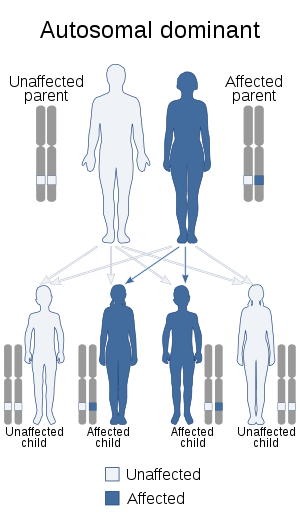Pashayan syndrome
Pashayan syndrome, also known as Pashayan–Prozansky Syndrome and blepharo-naso-facial syndrome, is a rare syndrome. Facial abnormalities characterise this syndrome as well as malformation of extremities.[2] Specific characteristics would be a bulky, flattened nose, where the face has a mask like appearance and the ears are also malformed.[3]
| Pashayan syndrome | |
|---|---|
| Other names | Pashayan–Prozansky Syndrome |
 | |
| This condition is inherited in an autosomal dominant manner[1] | |
A subset of Pashayan syndrome has also been described, known as "cerebrofacioarticular syndrome", "Van Maldergem syndrome'" or "Van Maldergem–Wetzburger–Verloes syndrome". Similar symptoms are noted in these cases as in Pashayan syndrome.[4][5][6]
References
- "OMIM Entry - 110050 - BLEPHARONASOFACIAL MALFORMATION SYNDROME". omim.org. Retrieved 4 August 2017.
- Bissonnette, Bruno; Luginbuehl, Igor; Dalens, Bernard J.; Marciniak, Bruno (2006). Bruno Bissonnette (ed.). Syndromes: rapid recognition and perioperative management. McGraw-Hill. p. 815. ISBN 978-0-07-135455-4.
- Stoll, C; Terzic, J; Fischbach, M (1999). "A three generations family with blepharo-naso-facial malformations suggestive of Pashayan syndrome". Genetic Counseling. 10 (4): 337–43. PMID 10631920.
- Maldergem, L.; Wetzburger, C.; Verloes, A.; Fourneau, C.; Gillerot, Y. (28 June 2008). "Mental retardation with blepharo-naso-facial abnormalities and hand malformations: a new syndrome?". Clinical Genetics. 41 (1): 22–24. doi:10.1111/j.1399-0004.1992.tb03622.x. PMID 1633641.
- Zampino, Giuseppe; Colosimo, Cesare; Balducci, Francesca; Mariotti, Paolo; Serra, Fabrizio; Scarano, Gioacchino; Mastroiacovo, Pierpaolo (28 June 2008). "Cerebro-facio-articular syndrome of Van Maldergem: confirmation of a new MR/MCA syndrome". Clinical Genetics. 45 (3): 140–144. doi:10.1111/j.1399-0004.1994.tb04011.x. PMID 8026105.
- Gastaut, H; Pinsard, N; Gastaut, JL; Régis, H; Michel, B; Roger, J; Dravet, C (November 1977). "[Tomodensitometric study of cerebral accidents causing acute hemiplegia in children]". Revue neurologique. 133 (11): 595–607. PMID 601390.
External links
| Classification | |
|---|---|
| External resources |
This article is issued from Wikipedia. The text is licensed under Creative Commons - Attribution - Sharealike. Additional terms may apply for the media files.